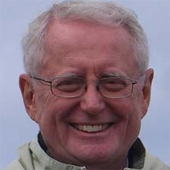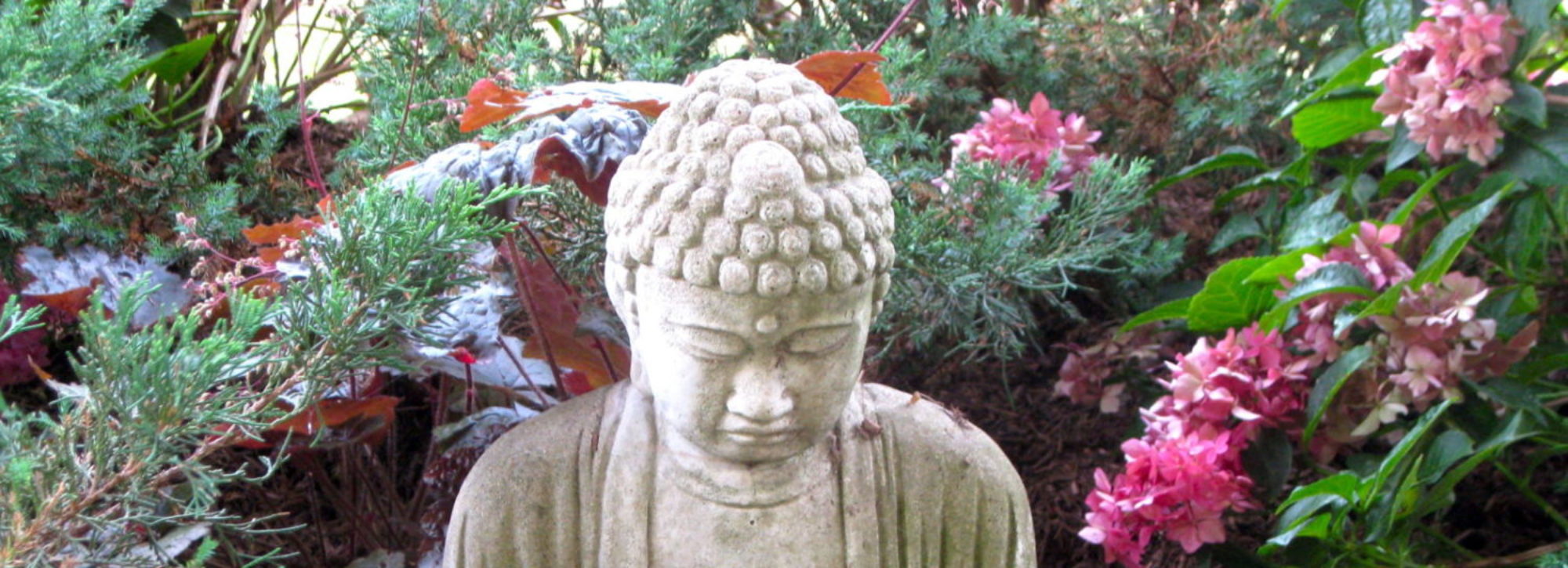
I recently attended a talk at Fordham University by Roshi Robert Kennedy. A Fordham student asked Roshi, ”What’s the biggest obstacle for beginning Zen practitioners?” He answered that at first Zen students are infatuated with the idea of practice and meditate with enthusiasm. Then after a year or two, not so much. They haven’t gotten enlightened and their problems haven’t changed — their practice hits a wall. At this point students focus in on the imperfections of their teacher and other sangha members and wonder if there’s a better practice somewhere else. A lot of Zen students drop out. Those who persist eventually develop a more mature view of practice: Enlightenment is no longer just around the corner — or even if it is — sitting won’t make it happen. As Ma-tsu inquired, ”How can polishing a tile make a mirror?” We just do the work — without expectation of gain — because it’s the work of being human.
Roshi’s words resonated because I’d recently completed a teleconferenced Dharma course offered through an on-line organization. The course was fine, but I was struck by the achievement-oriented striving permeating many of the participants’s questions. They’d read about Daniel Ingram’s stages of enlightenment and wanted to know exactly where they were along the path. Some of them despaired because they couldn’t afford to go on long retreats or take time off from work to do so. How would they ever achieve stream-entry? They were in a hurry, and Enlightenment was their destination.
Practicing ”like your hair’s on fire” is all well and good — practice needs sincerity and determination. But in practice, as Ayya Khema noted, we’re ”being nobody, going nowhere.” Larry Rosenberg says pragmatic Americans want to know the fastest way to get from Point A to Point B, but in meditation we go from Point A to Point A. We stay where we are, over and over. We’re always beginners — no starting practice, no advanced practice — just practice. We’re in it for the long haul.
If we practice in this way, without gaining idea, our practice takes care of itself.
Where are we on the path?
We’re always here.

At one of the Dalai Lama teachings I attended, during the question and answer period, someone asked ”What is the quickest and easiest way to realize selflessness?” The Dalai Lama responded by telling a story about Milarepa when he was dying and leaving his last instructions to his foremost disciple and he showed the callous on his butt that were the result of years of meditation. ”This is what I have endured, this is the mark of my practice.” As the translator was relating this in English and saying we should remember that the realization of dharma requires effort and commitment, the Dalai Lama began to cry and then he burst out, speaking English for the one and only time during the four days of teachings: ”Don’t think easiest, best, cheapest!”
Later on he said he hoped the audience would study the teaching he’d given deeply so that the next time he came no one would ask silly questions like that again.
Thanks for the story, David!
Maezumi Roshi wrote the following story about Obaku:
“Master Obaku, the teacher of Rinzai, was famous for his frequent admonition to his students: ‘Don’t expect anything from the Three treasures.’ Time after time he was heard to say this. One day, however, Master Obaku was observed in the act of bowing and was challenged about his practice. ‘You always tell your students not to expect anything from the Three Treasures,’ said his questioner, ‘and yet you have been making deep bows.’ And in fact, Master Obaku had been bowing so frequently and for so long that a large callous had formed on his forehead at the point where it touched the floor. When asked how he explained this, Master Obaku replied, ‘I don’t expect. I just bow.’
I guess that’s the difference between Zen and Vajrayana — in Zen you get callouses on your forehead, in Vajrayana, on the tuchus!
I hope that Zennie’s would get some callouses on their bums as well. As much as I appreciated your post on bowing, I think meditation is the crucial practice, don’t you agree?
Interesting question! I’d say awareness is what’s crucial — whether sitting, standing, walking, lying down, or bowing — and that awareness is our daily activities/interactions may be more crucial than awareness on the cushion, per se. But we Zennies do love to sit, no two ways about it.
Well written, thanx Seth.
As I read the word “practice”, an almost hackneyed word in Zen circles, I experimented substituting “participation” which has less of a connotation of accomplishing and perfecting. Apparently a Tibetan word commonly used for meditation is “gom” means “familiarization” — again, lacking nuances of achievement.
It is fun to play with words to break up the lulling habits of our minds.
Glad you liked it, Sabio. Please feel free to substitute any word for “practice” that frees its meaning for you. The ubiquity of the term, I think, derives from Dogen’s use of it, and its subsequent popularization in English through Suzuki Roshi. Perhaps you can go back to Dogen’s original Japanese and see if there’s a better translation. I’m personally comfortable with the word because it conveys that Buddhism is more about action than belief. For me “practice” is something you do — like “medical practice” — rather than the act of preparation for something in the future — but I understand how it can have the connotation of accomplishment and perfection, and to that degree, it stands in need of liberation!
An interesting conscient mindful blog ! Your topics are nicely written.
One day a guy who wanted get enlightened happened to meet Chinese poet Li Po – who was an accomplished Buddhist – and sought for various methods. This aspirant was expecting Li Po to spell out a series of breathing exercises and techniques of meditation.
Li Po with a smile replied him that every instant that his eyebrows did not move, he was a Buddha and the moment his eyebrows moved, he was he!
“No long practices?” wondered loud the aspirant.
“None is needed. But be(a)ware of your eyebrows!” replied Li Po.
Thank you!
Glad you’re enjoying the blog! I guess I’ve been wasting my time sitting! The secret is in the eyebrows!
I’m wondering if your Li Po story isn’t a version of the story about Yaoshan and Mazu from Dogen’s Shobogenzo? Here’s the original:
“Yaoshan was sent by his teacher Shitou to study with Mazu. He asked, I am familiar with the Buddha’s basic teachings, but what is the main point of Zen?’ And Mazu said, For the time being have him raise his eyebrows and wink. For the time being don’t have him raise his eyebrows and wink. For the time being to have him raise his eyebrows and wink is right. For the time being to have him raise his eyebrows and wink is not right.’ Hearing this Yaoshan understood and said, When I was studying with Shitou, I was like a mosquito trying to bite an iron bull.'”